Managing people used to mean maintaining filing cabinets full of employee records, performing manual payroll calculations, and dealing with endless paperwork. Those days are gone.
Today’s businesses run on digital solutions that handle all HR processes in one centralized platform. In fact, according to a Gartner survey report conducted among HR leaders, 48% stated that they are thinking about investing more in HR technology.
HR software has become essential for modern workforce management, but many business leaders still wonder what it actually does and whether they need it. In this guide, we break down what HR software is, how it works, and what you should look for when choosing a solution for your business.
Key Takeaways:
- Digital workforce management: HR software centralizes all employee data and processes in one platform for better efficiency.
- Process automation: Automates repetitive tasks like payroll, attendance tracking, and benefits administration.
- Strategic focus: Frees HR teams from administrative tasks to focus on talent development and strategic initiatives.
- Scalable solutions: Grows with your business from startup to enterprise with modular features.
- Data-driven decisions: Provides analytics and insights for better workforce planning and performance management.
- Employee experience: Offers self-service options that improve employee satisfaction and engagement.
What is HR Software?
HR software is a digital platform that manages all aspects of your workforce from a single system. It works as a central hub for everything related to your employees, including their information, payroll, benefits, performance reviews, and career development.
Modern HR software (also called Human Resource Management System or HRMS) automates manual processes that used to require hours of paperwork. Instead of maintaining physical files and spreadsheets, everything lives in a secure, cloud-based system that authorized personnel can access from anywhere.
The software handles the entire employee lifecycle from posting job openings and screening candidates to managing performance reviews and processing final settlements when employees leave.
Now, the definition sounds helpful, but you’re probably wondering if your business really needs it.
Why do Businesses Need HR Software?

Manual HR processes create bottlenecks that slow down your entire organization. Every hour your HR team spends on data entry, file searches, and repetitive administrative tasks is time they could spend on strategic initiatives that drive business growth.
Here are the key reasons businesses invest in HR software:
- Reduce human errors: Manual payroll calculations and data entry lead to costly mistakes that HR software prevents through automation.
- Save time and resources: Tasks that once took days now complete in minutes, freeing your team for higher-value work.
- Ensure compliance: Built-in compliance features help you stay current with changing labor laws and regulations.
- Improve employee experience: Self-service portals let employees update their information, request time off, and access pay stubs without HR intervention.
- Make data-driven decisions: Real-time analytics show you trends in turnover, performance, and workforce costs.
- Scale efficiently: Cloud-based systems grow with your business without requiring additional infrastructure investments.
The cost of not having HR software often exceeds the investment in the solution itself, especially when you factor in compliance risks and productivity losses.
Want to see how modern HR technology can change your workforce management? TeamLease Digital helps businesses implement the right HR software solutions with expert guidance and ongoing support.
The benefits sound appealing, but what specific tools and features make this possible?
What are the Main Features of HR Software?
Modern HR software platforms include modules that handle different aspects of workforce management. Most solutions offer these core features:
- Employee information management: Stores all employee data in digital profiles, including contact information, job history, certifications, and documents.
- Payroll processing: Calculates salaries, taxes, deductions, and benefits automatically based on attendance data and company policies.
- Time and attendance tracking: Records when employees clock in and out, tracks break times, and manages leave requests.
- Performance management: Facilitates regular performance reviews, goal setting, and feedback collection through structured workflows.
- Benefits administration: Manages health insurance, retirement plans, and other employee benefits with automated enrollment processes.
- Recruitment and onboarding: Handles job postings, application screening, interview scheduling, and new hire paperwork through integrated workflows.
For instance, when an employee updates their address, the change automatically reflects across payroll, benefits, and emergency contact systems. Similarly, the system handles complex scenarios like overtime calculations, bonus payments, and statutory compliance without manual intervention.
With so many features available, you’ll also want to know which type of system fits your specific situation.
What Types of HR Software Solutions Are Available?

HR software comes in different configurations depending on your business needs and budget. Each type serves specific organizational requirements and business stages.
| Type | Primary Function | Best For | Key Benefits |
| HRIS/HRMS | Complete HR management | Mid to large companies | Unified data, integrated workflows |
| Applicant Tracking Systems | Recruitment and hiring | Growing companies | Faster hiring, better candidates |
| Payroll Software | Salary and benefits processing | All business sizes | Accurate calculations, compliance |
| Performance Management | Employee reviews and goals | Companies with structured reviews | Better employee development |
| Time and Attendance | Work hours tracking | Businesses with hourly workers | Accurate time records, overtime control |
| Employee Onboarding | New hire integration | Companies with regular hiring | Faster productivity, better retention |
| Learning Management | Training and development | Skills-focused organizations | Employee growth, compliance training |
| HR Analytics | Data insights and reporting | Data-driven companies | Better workforce decisions |
| Benefits Administration | Health insurance and perks | Companies with complex benefits | Simplified enrollment, cost control |
| Employee Engagement | Feedback and surveys | Culture-focused organizations | Higher satisfaction, lower turnover |
Let’s explore each type in detail to help you choose the right fit:
1. HRIS and HRMS Platforms
Examples: BambooHR, Workday, SuccessFactors
Human Resource Information Systems (HRIS) and Human Resource Management Systems (HRMS) serve as all-in-one platforms that handle multiple HR functions from a single interface. These systems work best for companies that want to manage their entire workforce through one integrated solution.
Here’s how HRIS platforms help your business:
- Centralized employee database: Store all workforce information in one secure location with role-based access controls.
- Automated workflows: Route approvals, notifications, and updates automatically based on your business rules.
- Integrated reporting: Generate reports across all HR functions without manual data compilation.
- Compliance management: Track certifications, training requirements, and regulatory documentation automatically.
- Self-service capabilities: Allow employees to update personal information, request time off, and access documents independently.
Best For: Mid to large companies (100+ employees) wanting unified HR management, organizations with complex compliance requirements, and businesses seeking to replace multiple HR tools with one platform.
2. Applicant Tracking Systems

Examples: Greenhouse, Lever, JazzHR
Applicant Tracking Systems (ATS) focus specifically on recruitment and hiring processes, helping companies attract, screen, and hire the right candidates efficiently. These platforms become crucial when you’re struggling with disorganized hiring, losing good candidates due to slow processes, or failing to maintain consistent candidate communication.
Here’s how ATS platforms help your business:
- Multi-channel job posting: Distribute openings to job boards, social media, and career sites from one platform.
- Resume screening automation: Filter applications based on keywords, skills, and qualifications to identify top candidates.
- Interview coordination: Schedule interviews, send calendar invites, and manage feedback collection from hiring teams.
- Candidate communication: Send automated updates and personalized messages throughout the hiring process.
- Hiring analytics: Track metrics like time-to-hire, source effectiveness, and candidate pipeline health.
Best For: Growing companies with regular hiring needs, organizations struggling with manual recruitment processes, and businesses that receive high volumes of applications per job opening.
3. Payroll Software
Examples: Gusto, ADP, Paychex
Payroll software handles salary calculations, tax deductions, benefits administration, and compliance reporting for employee compensation. This type becomes essential when manual payroll processing leads to errors, compliance issues, or consumes excessive time from your finance team.
Here’s how payroll software helps your business:
- Accurate calculations: Process salaries, overtime, taxes, and deductions automatically with built-in compliance rules.
- Direct deposit management: Handle bank transfers, pay cards, and check printing with secure payment processing.
- Tax compliance: Generate tax forms, handle filings, and manage year-end reporting requirements automatically.
- Benefits integration: Coordinate with health insurance, retirement plans, and other benefit providers seamlessly.
- Employee pay portals: Provide secure access to pay stubs, tax documents, and payment history.
Best For: All business sizes needing accurate payroll processing, companies with complex pay structures, organizations wanting to reduce payroll administration time, and businesses seeking better tax compliance.
4. Performance Management Software

Examples: 15Five, Lattice, Culture Amp
Performance management platforms facilitate regular employee reviews, goal setting, and continuous feedback processes. These systems become valuable when annual reviews feel outdated, employees lack clear objectives, or managers struggle to provide consistent feedback.
Here’s how performance management software helps your business:
- Goal tracking: Set, monitor, and update individual and team objectives with progress visualization.
- Continuous feedback: Enable regular check-ins and feedback exchanges between managers and employees.
- Review automation: Schedule review cycles, collect feedback, and generate performance reports automatically.
- Development planning: Create personalized growth plans and track skill development over time.
- Performance analytics: Identify top performers, skill gaps, and trends across departments and roles.
Best For: Companies with structured performance review processes, organizations focused on employee development, businesses wanting to improve manager-employee communication, and teams seeking data-driven performance insights.
5. Time and Attendance Software
Examples: Kronos, Deputy, TSheets
Time and attendance systems track employee work hours, manage leave requests, and ensure compliance with labor regulations. These platforms become critical for businesses with hourly workers, multiple shifts, or complex overtime policies.
Here’s how time and attendance software helps your business:
- Accurate time tracking: Capture work hours through multiple methods with real-time validation and approval workflows.
- Overtime management: Calculate overtime pay automatically and alert managers when employees approach overtime thresholds.
- Leave management: Handle vacation requests, sick days, and other time-off types with approval workflows and accrual tracking.
- Scheduling integration: Coordinate with work schedules to identify attendance issues and coverage gaps.
- Labor cost control: Monitor labor expenses in real-time and generate reports for budgeting and cost analysis.
Best For: Businesses with hourly workers, companies with multiple shifts or locations, organizations needing precise labor cost tracking, and businesses with complex overtime or leave policies.
6. Employee Onboarding Software
Examples: WorkBright, Click Boarding, Sapling
Onboarding platforms guide new hires through their first days and weeks, ensuring they complete necessary paperwork, training, and integration activities. These systems become essential when new employees feel overwhelmed, take too long to become productive, or leave shortly after starting.
Here’s how onboarding software helps your business:
- Pre-boarding preparation: Send welcome materials, required forms, and initial information before the start date.
- Task automation: Create checklists for new hires and managers with automated reminders and deadline tracking.
- Document management: Collect signatures on policies, tax forms, and agreements through digital workflows.
- Training coordination: Schedule orientation sessions, assign learning modules, and track completion progress.
- Integration support: Connect new employees with mentors, teams, and resources needed for success.
Best For: Companies with regular hiring, organizations wanting to improve new hire retention, businesses with complex onboarding requirements, and teams seeking to reduce time-to-productivity for new employees.
7. Learning Management Systems

Examples: Cornerstone OnDemand, TalentLMS, Docebo
Learning Management Systems (LMS) deliver training content, track employee development, and manage certification requirements. These platforms become valuable when employees need regular skill updates, compliance training, or career development opportunities.
Here’s how learning management systems help your business:
- Content delivery: Distribute training materials in multiple formats with progress tracking and assessment capabilities.
- Compliance training: Manage mandatory training requirements with automatic enrollment and deadline monitoring.
- Skill tracking: Monitor employee competencies and identify development needs across teams and departments.
- Certification management: Handle professional certifications, renewals, and continuing education requirements.
- Learning analytics: Measure training effectiveness, completion rates, and skill improvement across the organization.
Best For: Organizations with extensive training needs, companies in regulated industries requiring compliance training, businesses focused on employee skill development, and teams needing structured learning programs.
8. HR Analytics Software
Examples: Visier, Worklytics, PeopleAnalytics
HR analytics platforms collect, analyze, and visualize workforce data to support strategic decision-making. These tools become crucial when you need data-driven insights about turnover, performance, recruitment effectiveness, or workforce planning.
Here’s how HR analytics software helps your business:
- Predictive insights: Identify employees at risk of leaving and factors that contribute to high performance.
- Recruitment analytics: Measure hiring source effectiveness, time-to-fill metrics, and candidate quality indicators.
- Workforce planning: Forecast staffing needs based on business growth, seasonality, and historical patterns.
- Compensation analysis: Compare pay equity across demographics and benchmark against market rates.
- Performance correlation: Connect training, engagement, and development activities to business outcomes.
Best For: Data-driven organizations, companies wanting to reduce turnover, businesses needing workforce planning insights, and HR teams seeking to measure the impact of their initiatives.
9. Benefits Administration Software
Examples: Benefitfocus, Maxwell Health, PlanSource
Benefits administration platforms manage employee health insurance, retirement plans, and other perks while handling enrollment periods and compliance requirements. These systems become essential when benefits management consumes significant HR time or employees struggle with enrollment processes.
Here’s how benefits administration software helps your business:
- Enrollment automation: Guide employees through benefit selections with decision support tools and deadline reminders.
- Carrier integration: Connect with insurance providers and financial institutions for seamless data exchange.
- Cost management: Track benefit expenses, analyze utilization patterns, and negotiate better rates with providers.
- Compliance reporting: Generate required government reports and ensure adherence to regulations.
- Employee communication: Provide clear benefit information, comparison tools, and personalized recommendations.
Best For: Companies with complex benefits packages, organizations wanting to reduce benefits administration time, businesses with multiple insurance carriers, and HR teams needing better benefits cost control.
10. Employee Engagement Software
Examples: Glint, Culture Amp, Motivosity
Employee engagement platforms measure satisfaction, collect feedback, and help improve workplace culture through surveys, pulse checks, and action planning tools. These systems become valuable when you need regular feedback about employee satisfaction, want to identify culture issues early, or need to measure the impact of workplace initiatives.
Here’s how employee engagement software helps your business:
- Continuous feedback: Collect regular input through surveys, polls, and feedback tools with anonymity options.
- Sentiment analysis: Monitor employee satisfaction trends and identify issues before they impact productivity.
- Action planning: Create improvement initiatives based on feedback data with progress tracking and accountability measures.
- Manager tools: Provide team leaders with insights and recommendations for improving engagement within their groups.
- Culture measurement: Track cultural indicators and compare results across departments, locations, and time periods.
Best For: Culture-focused organizations, companies wanting to improve employee satisfaction, businesses with retention challenges, and management teams seeking regular workforce feedback.
With so many types available, you might wonder what specific benefits you can actually expect from HR software solutions.
How does HR Software Benefit Your Business?

The right HR software changes how your organization manages people and drives measurable business improvements across multiple areas of operations.
- Reduced administrative costs: Automation cuts time spent on routine tasks, allowing your HR team to focus on strategic initiatives.
- Better compliance management: Automated record-keeping and reporting reduce the risk of costly labor law violations and audit issues.
- Improved hiring quality: Structured recruitment processes and applicant tracking help you identify and hire better candidates faster.
- Enhanced employee satisfaction: Self-service features and transparent processes improve the overall employee experience.
- Data-driven insights: Analytics help you identify trends in turnover, performance, and engagement before they become problems.
- Scalability support: Cloud-based systems grow with your business without requiring major infrastructure changes.
Return on investment typically occurs within 12-18 months through reduced labor costs, improved compliance, and better workforce productivity. Companies also see improvements in employee retention and overall organizational efficiency.
Looking for HR technology that fits your specific industry and business size? TeamLease Digital offers access to a wide range of HR software solutions with expert guidance to help you choose and implement the right platform for your needs.
Knowing the benefits is great, but choosing the right solution requires a structured approach.
How to Choose the Right HR Software for Your Business?

Selecting HR software requires careful evaluation of your current processes, future needs, and available budget. Follow this practical approach to make the right decision.
- Assess your current challenges: List the specific problems you want to solve. Are you struggling with payroll errors, compliance issues, or slow hiring processes? Your biggest pain points should drive your software selection priorities.
- Define your requirements: Create a list of must-have features versus nice-to-have options. For instance, if you have remote employees, mobile access becomes essential rather than optional. Consider both current needs and growth plans.
- Consider integration needs: Your HR software should connect with existing systems like accounting software, time clocks, or collaboration tools. Poor integration creates data silos that reduce efficiency and increase manual work.
- Evaluate vendor support: Look for providers that offer solid implementation support, training, and ongoing customer service. The software is only as effective as the support behind it, especially during initial setup.
- Plan for growth: Choose a solution that can scale with your business. Adding new features or users should be straightforward as your company expands into new markets or increases headcount.
- Test before committing: Take advantage of free trials or demos to see how the software works with your actual data and processes. This helps you identify potential issues before making a financial commitment.
Conclusion
HR software has evolved from a nice-to-have tool to an essential business platform that drives operational efficiency and strategic growth. The right solution automates manual processes, reduces compliance risks, and provides the data insights needed for informed workforce decisions.
Modern businesses that invest in HR technology gain competitive advantages through improved hiring processes, better employee experiences, and data-driven management practices. The key is choosing a solution that matches your current needs while providing room for future growth.
Ready to get expert help in selecting and implementing HR software that actually fits your business needs? TeamLease Digital provides technology consulting with complete support throughout the entire implementation process. Contact us today!
FAQs
1. What’s the difference between HR software and HRIS?
HR software is a broad term for any digital HR tool, while HRIS specifically refers to platforms that manage employee data. HRIS systems typically include multiple HR functions as integrated modules within one system.
2. Can small businesses benefit from HR software?
Yes, even small businesses with 10-20 employees benefit from basic HR software features. Payroll automation and employee record-keeping provide immediate value and compliance support for growing companies.
3. How long does HR software implementation take?
Implementation typically takes 2-8 weeks, depending on system complexity and customization requirements. Simple cloud-based solutions can be deployed faster than enterprise platforms with extensive customization needs.
4. What happens to our data if we switch providers?
Reputable HR software providers offer data export tools and migration support services. You can transfer employee records and historical data to new systems without losing critical business information.
5. Can HR software integrate with existing accounting systems?
Most modern HR platforms offer integrations with popular accounting software like QuickBooks and Tally systems. These connections ensure seamless data flow between payroll and financial management systems without manual data entry.
6. Do employees need training to use HR software?
Basic features like self-service portals are designed to be intuitive for regular employees. Managers and HR staff typically need training sessions to use advanced features and administrative functions effectively.






